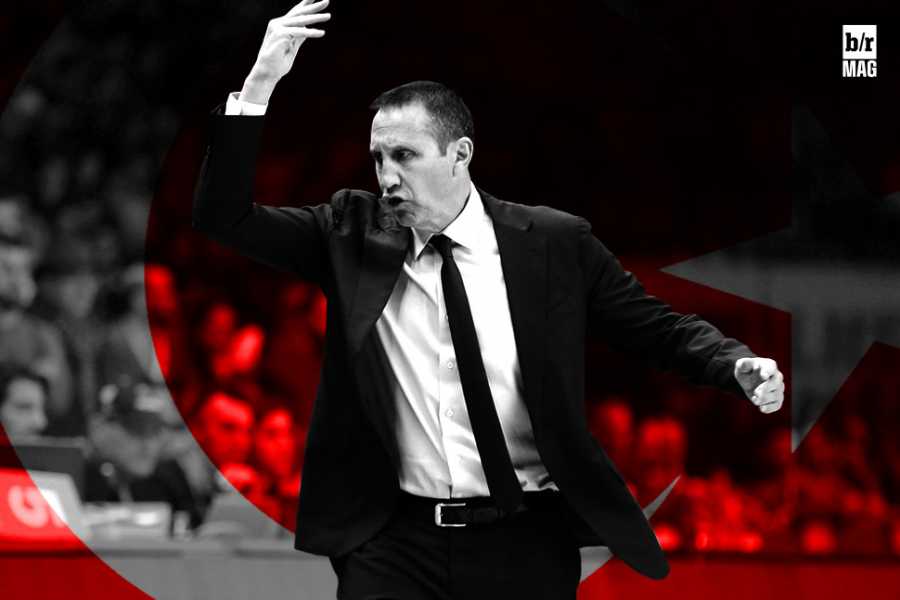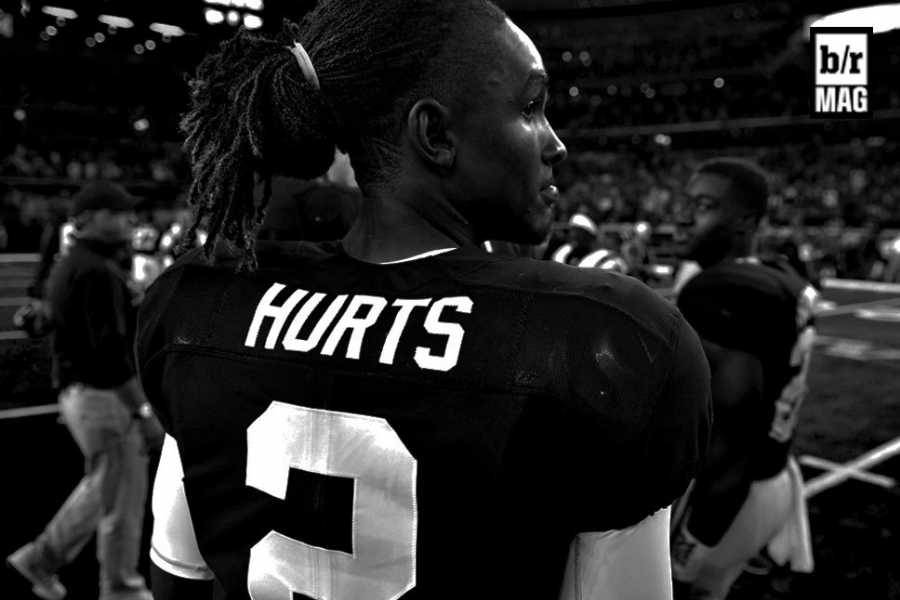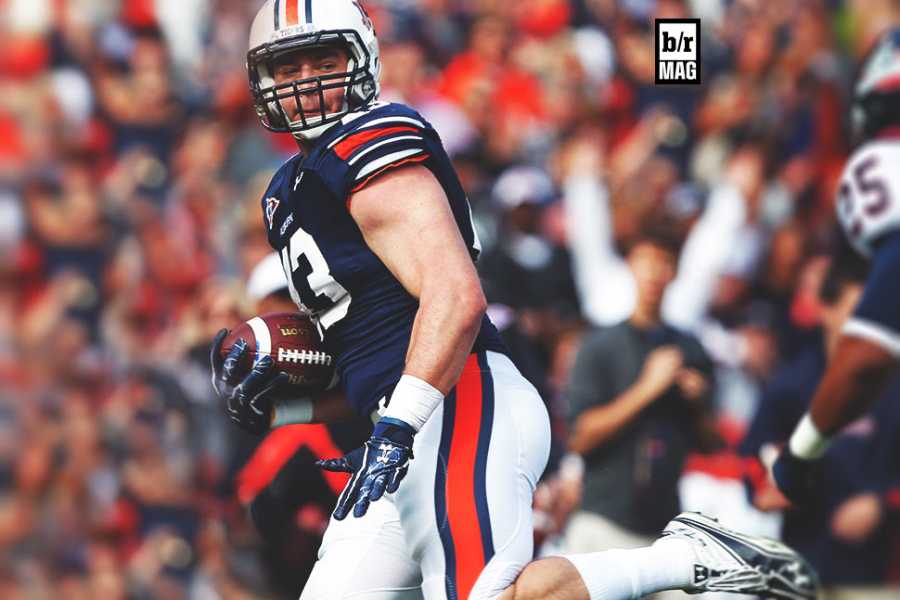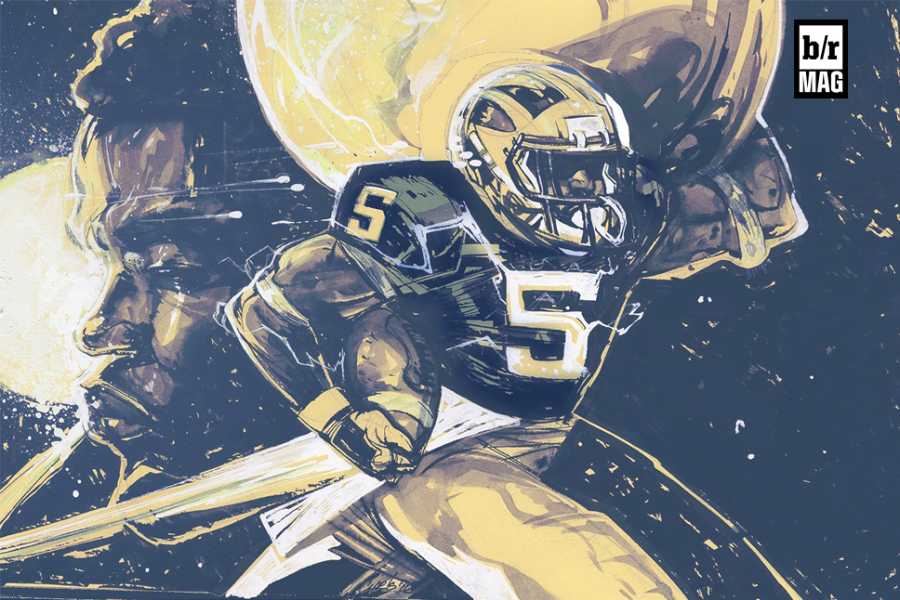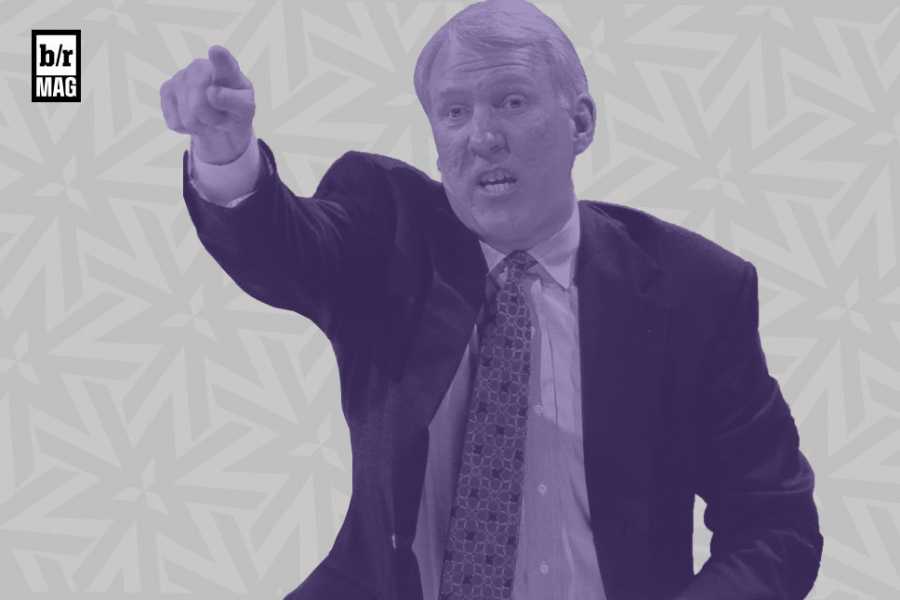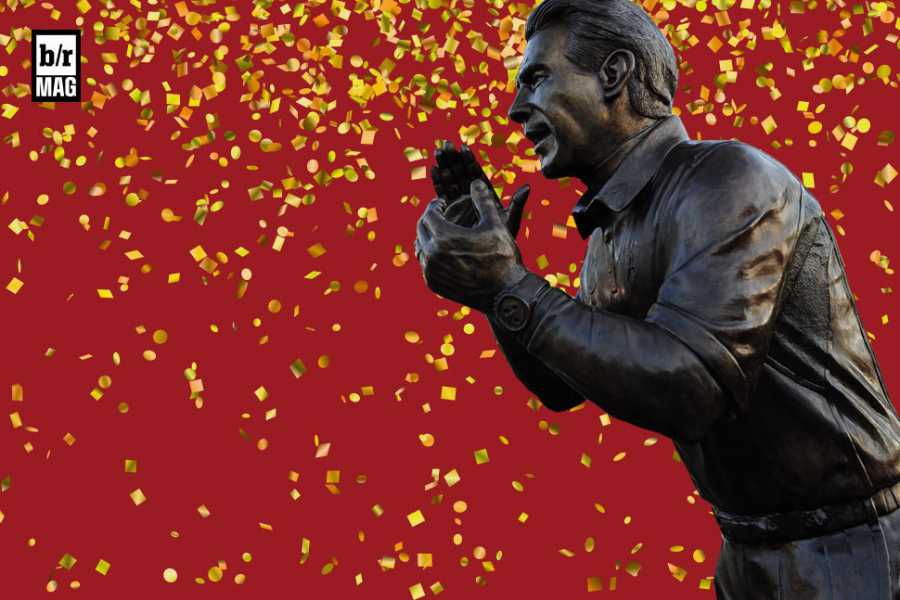Behind the bar is a tall man with a bleach-blond mohawk, stretched earlobes and a black replica basketball jersey from the movie Space Jam. He’s wearing a turquoise wristwatch and his cutoff jean shorts are rolled up above his knees. There’s an elephant-shape disco ball hanging overhead and dozens of beers on draft, all with uniform wooden taps. By late afternoon, the only open seat is near the end of the bar. To the left, a young man sipping a Bud Light appears to be studying for some sort of pilot’s exam. To the right, two men in their early 30s are sharing a pitcher of “Kentucky Mule”—like a Moscow Mule, but with bourbon instead of vodka—and discussing their respective weightlifting regimens.
This is Bodega, a popular gastropub about a mile from the Ohio State University campus. It’s the bar where Johnny Manziel was famously photographed Thursday, April 28, the night of the first round of the 2016 NFL draft.
That night, a sports radio reporter in Cleveland named Will Burge tweeted the picture of Manziel sitting at the end of the bar, wearing a gray hoodie and a white headband. Which looked kind of pathetic, especially if you believed the accompanying caption: “2 yrs ago he was a 1st rd pick...now hes unemployed watching it at a bar in Columbus b4 the Bieber concert #Manziel"
2 yrs ago he was a 1st rd pick...now hes unemployed watching it at a bar in Columbus b4 the Bieber concert #Manzielpic.twitter.com/phXU96jL3K
— Will Burge (@WillBurge) April 29, 2016
The image, that juxtaposition, seemed like something straight out of a cliche-ridden Hollywood movie: a 23-year-old born with every advantage in the world, having squandered so many opportunities, gazing blankly upon a new class of players full of promise and potential. By that night, Manziel had already been cut by the Cleveland Browns, the team that drafted him. He’d been fired by two different agents. Nike had terminated his endorsement deal. He had been indicted by a Dallas County grand jury on a misdemeanor assault charge for allegedly throwing his ex-girlfriend against a car window and hitting her in the ear so hard she lost her hearing. His father had told a reporter that he feared his son wasn’t going to live to 24. And now Manziel was out, watching the draft at a bar.
Of course the image quickly spread on Twitter, and across the internet. That this moment would occur in public, in a town full of football fans, was remarkable. But it seemed in kind with so much of Manziel’s highly publicized, cartoonishly predictable downfall.
Obviously the events that made Johnny Football a nicknamed celebrity happened in front of tens of thousands of screaming fans. At Kyle Field, he was cheered like a god by Texas A&M fans, and on the road in the SEC, he was booed like a villain. He was able to thrive on both. And if he never plays another down of professional football, he’ll still have millions of dollars from his family’s oil fortune; he could easily party in private anytime he wants. (And he has!)
But as his world appeared to crumble, so much of Manziel's troubled behavior—the seemingly harmless partying, the worrisome red flags, the truly destructive criminal conduct—rather bizarrely occurred in public, in bars or nightclubs or casinos across America. Even after it was readily apparent that he almost certainly had a drinking problem, that his public stint in rehab didn’t work, the man was still pounding shots and buying rounds and getting in fights and being served legal documents while surrounded by strangers who were often holding cameras. Manziel has, simply, preferred to go out. To the swank lounges of West Hollywood. To the sweaty nightclubs of Las Vegas. To expensive hotels in Dallas. And to places like Bodega, in Columbus, Ohio.
Call it morbid curiosity, but I wanted to see these places for myself. I wanted to see the physical locations where this young man’s life has so publicly unraveled, where he’s gone to forget his troubles—only to accumulate more. I wanted to go where he went, drink what he drank and see what he saw. Not with the goal of running into him, exactly, but to talk to the everyday people who’ve witnessed Johnny Manziel in what seems to be his most natural element: amid the strobing lights and thunderous beats and SHOTS shots shots-shots-shots. (Everybody!) I wanted to know what Manziel would have been thinking as his troubles were stacking up but he was out, thumping through the night to the still-mysterious rhythms of his own mind.
Tonight, like most nights, the place is packed, and there’s a small crowd waiting for seats. The air smells like wing sauce. On the wall, in two-foot mirrored letters, is the word BODEGA, except the D and the A have been switched, so it says BOAEGD. One TV is showing Olympic volleyball, and another is showing a rugby game. Outside, a homeless man walks by in a No. 2 Browns jersey that says MANZIEL.
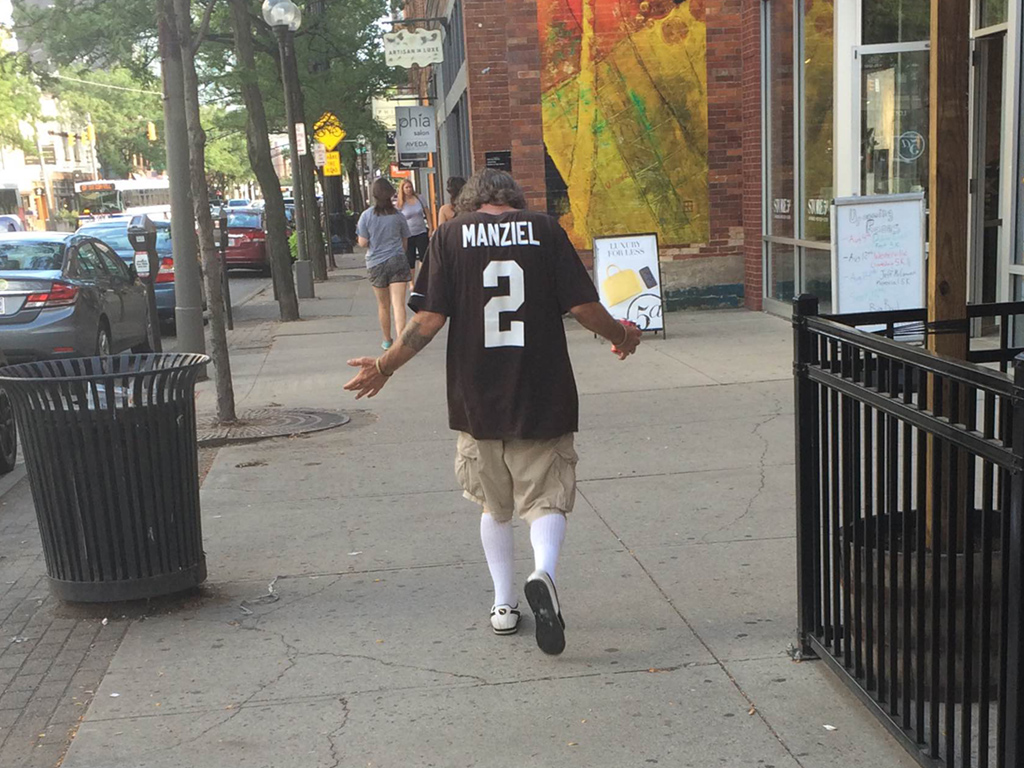
MICHAEL J. MOONEY
The bartender with the blond mohawk introduces himself as Govan. He says he was working the night Manziel came in. He also says that, despite what Burge reported, the quarterback didn’t watch the draft here at all. “He was already gone by then,” Govan tells me. Burge, the reporter, says he sent out a friend’s photo. Like so many of the details we choose to ignore in favor of an outrageous and outrageously simple thing to share on social media, I would learn this was not the only Manziel tabloid story that was instantly exaggerated.
Later that night, Manziel bought a round of 300 shots at another bar, and he tweeted the next day: “You guys act like what I'm doing is something new. I've been the same person, doing the same things since it all started.” Then, six minutes later: “Made plenty of mistakes along the way, and have a lot I'd do differently. To all my family and real friends who have stuck by me...THANK YOU”. Then, three minutes after that, he tweeted at Burge, calling him a “pussy.” In the rant, though, Manziel never denied he watched the draft at Bodega.
@WillBurge should have just said it to my face instead of sitting across from us tweeting away. Pussy
— Johnny Manziel (@JManziel2) April 29, 2016
At the time, news stories focused on the invective, on the admission that Manziel has made mistakes. But it’s that first part—his pride in refusing to change his behavior, even as the consequences grew more disastrous—that I found most interesting. In the mind of Johnny Football, he was merely doing what he’s always done: He’s just a young man having fun, and the world is changing around him.
Govan says Manziel came in early in the evening. “He was pregaming for the Bieber concert,” the bartender explains. He says he recognized the Heisman Trophy winner immediately and watched as he had four or five “Vegas bomb” shots—Crown Royal, schnapps and Red Bull—and ordered a grilled cheese sandwich. Govan says Manziel didn’t interact much with anyone, except strangers sending him shots—which he dutifully consumed. He says Manziel was here for 30 minutes or so and left long before the TV crews showed up later that night. He can’t remember anyone else asking him about it since then, either.
“Nobody gives a shit about Johnny Football here,” the bartender tells me. “Nobody even talked to him. People may care about him in Cleveland or in Houston, but we all knew he was an idiot here. We’re on to the next guy.”
◆◆◆
A goat’s head hanging on the wall of Chimy’s Cerveceria in College Station has a giant Shiner bottle in its mouth. A ram’s head hanging on a different wall is decorated with a wig. Next to it is a giant flip-flop with a Mike’s Hard Lemonade logo. A Creedence Clearwater Revival song is playing, and a Dallas Cowboys preseason game is on TV. To people who don’t know better, the kitsch details probably seem unique. But there are other branches of Chimy’s near Texas Tech, TCU, Oklahoma and Texas State. This Chimy’s, though, a few hundred feet from the dorms at Texas A&M, is the place people say is Manziel’s favorite bar. He’d come often when he lived here, and a week before he was drafted in 2014, he told Petro Robledo, the general manager, that he wanted to buy a round of Fireball and Miller Lite for the entire place that night—a tab on his credit card for $2,000, in honor of his jersey number.
Tonight, the Thursday before classes start, the bar is full and the crowd is bleeding onto the patio. A group of 12 women is celebrating something at a table in the middle of the room. Three grad students are talking about video games and sipping beer in the corner. Five young men, all wearing polo shirts and ball caps, grab a table near the bar. It appears they’ve been playing golf—something else Manziel loved to do when he was here—and they order a bucket of beers. Then another. I can’t help but think these guys might have been drinking buddies with Manziel if they’d been here three years ago.
They’re talking loudly about what a great fall they’re in for when “Highway to Hell” comes on. That’s when the biggest, loudest guy among them announces: “AC/DC up in here? Oh, fuck yeah! Set it off! Burn this motherfucker down!” He tries to sing along but messes up the lyrics. (When Steve Miller comes on next, the guy makes it clear he knows the words.)
None of the employees here really want to talk to me about Johnny Football. I see a few MANZIEL jerseys around, but a lot of people in College Station got sick of hearing about his antics. Most of the culture in this town values sameness and order and following the rules. But people here love winning football games, too. While he was still a student and player, Manziel needed security to get through the mobs of adoring fans on his way home. But he also famously tweeted during the summer of 2013: “Bullshit like tonight is a reason why I can’t wait to leave college station...whenever it may be.” He deleted the tweet and apologized, but his Mercedes was keyed that year. I’m curious to see how people react to him now that he’s taking classes at the school again. (The classes are "online for the most part," a spokesperson told B/R Mag, "but it's going fine—he's a smart kid. He's enrolled to graduate.")

He used to come to Chimy’s, though, “pretty often—sometimes a couple times a week,” one of the employees says, and he always saw friendly faces. The night of the draft, while Manziel was in Radio City Music Hall, Chimy’s was packed, even before the announcement that Manziel was buying beers and shots from 1,400 miles away. Around 250 people watched as team after team passed him up, for nearly three hours. When the Cowboys were on the clock with pick No. 16, someone at the bar put on Kid Rock’s “Cowboy,” with the lyrics: “I wanna be a Cowboy, baby.” But alas, the Cowboys, somehow, didn’t take Johnny Football either.
As the preseason game continues to play on TV, a man in a tank top watching near the door mentions the Cowboys have another chance to get Manziel—“He’s a free agent, after all”—but the team has said unequivocally that Manziel won’t be invited for a tryout. The fan reminds me this is a franchise that has, in the last three years alone, employed both Greg Hardy, who was originally suspended 10 games after allegedly attacking his girlfriend and throwing her onto a couch full of guns (the suspension was shortened to four games), and Josh Brent, who served six months in jail after he killed a teammate in a drunken-driving accident. But Manziel, a native son of Texas, isn’t worth the drama.
A block from Chimy’s is the intersection where, in many ways, the public documentation of Manziel’s drinking exploits began. In June 2012, before he’d played a single down for the Aggies, he was arrested here, at the corner of Church Avenue and First Street. It only made news that week because he was expected to compete for the starting quarterback job that fall. He never missed a game because of the incident, but there were three charges: disorderly conduct, failure to identify and possession of a fake driver's license. In his mug shot, Manziel’s eyes are empty, his acne is active—and he is not wearing a shirt. He was 19 years old.
Tonight, the intersection is dark and mostly devoid of people. It’s next to a parking lot and near the dorms, close to rows and rows of bars. You can hear the echoes of the good times floating down the street.
According to an affidavit, early in the morning of June 29, 2012—just after the bars closed—a bicycle officer here came upon Manziel and a 47-year-old black man named Marvin McKinney “actively fighting each other” in the middle of the street. When the officer separated the men, Manziel smelled like alcohol and slurred his words. McKinney and an “independent witness” told police that as McKinney walked by, Manziel’s friend called him “nigger.” McKinney confronted the friend, and Manziel intervened to defend his friend, repeatedly punching the man and holding on in what the officer described as “mutual combat.”
When an officer asked Manziel for ID, he produced a fake Louisiana driver’s license with a date of birth in 1990. (Manziel was born in 1992.) An officer wrote in the affidavit that Manziel “appeared to be so intoxicated that he could not answer my questions about the incident except to tell me that he wanted a ride home and was sorry.”
The police report does not explain what happened to Manziel’s shirt.
◆◆◆

